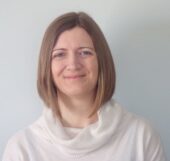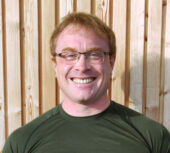Anxiety therapists in Bristol, England ENG, United Kingdom GB
We are proud to feature top rated Anxiety therapists in Bristol, England, United Kingdom. We encourage you to review each profile to find your best match.
Alison Edwards Therapy, Coaching & Supervision
Psychologist, CBT Therapist, FMBPsS, MA (Hons), MSc, CertCouns, MSc
I provide Cognitive Behaviour Therapy which is the recommended psychological therapy for panic attacks, agoraphobia, social anxiety/ social phobia, other phobias, Obsessive Compulsive Disorder, Generalised Anxiety Disorder* and stress/ burnout. I have several years experience of supporting clients who had been bullied at school or gone through workplace bullying, harrassment, stalking, domestic violence and court proceedings. During my professional qualification I chose to specialise in panic attacks and agoraphobia for my research and dissertation. I have provided therapy for clients who had phobias of elevators, buses, trains, underground trains, bees, dogs, hospitals, needles, blood, injuries, and childbirth. I can also provide CBT for depression, traumas and PTSD. *GAD also known as chronic neurosis is excessive and persistent worrying about several areas of your life, worry that is out of proportion with the situation and interfering with day-to-day life, a feeling of not being able to control worrying, and difficulties around overthinking and planning for potential problems that have not occurred.
16 Years Experience
Online in Bristol, England (Online Only)
Jimi Katsis
Counsellor/Therapist, MA psych, Dip SW
Experiencing anxiety or fear is fairly common for most of us. Feeling anxious before a test or exam, meeting new people or talking in public are examples. When anxiety starts to impact your daily life to the extent that the feelings are so overpowering that they stop you from doing what you want, its time to look deeper into what is causing it and how it can be minimised. For some of us it is relatively simple to find the root cause of what is making you feel anxious, for others it may take some digging. The important thing to realise is that through therapy you can regain control and get your life back to. Get in touch now for a free consult to see how i could help.
25 Years Experience
In-Person in Bristol, ENG
Online in Bristol, England
Nick Morecroft Trauma Counselling
Counsellor/Therapist, MBACP
Your anxieties can be held and carefully followed back to their origin. By doing this we can untangle how your present day anxieties and fears are related to your past, and work towards dissolving the activation of them.
10 Years Experience
In-Person in Bristol, England BS3 2BX
Online in Bristol, England
Dr Grenville Major
Therapist, MBchB, MRCpsych, MSc psychological therapies
Anxiety takes many forms. It can present as OCD, agoraphobia or more commonly as free-floating anxiety. You could view it as your body's way of warning you that there is something amiss. The role in therapy is to discover what it is your body is trying to tell you. Then you can begin to confronted it and become stronger. I would like to meet with you to see what can be done to help you. This will enable us to get to know each other and see if we can work together. It’s important for you to work with someone you trust and feel safe with.
43 Years Experience
In-Person in Bristol, ENG BS16 1AD
Online in Bristol, England
Tamzin Brain@HypnoChange4U
Therapist, Ad.Dip.CP, DipHyp CS, Dip CP, MNCS (Acc), MHS, Counselling Cert, CACHE3, B.A. Honours Degree PsyCrim
Hypnosis and counselling can gently find & remove the root cause of your anxiety which can lead to a lasting solution, freeing you for life.
"I’ve had hypnotherapy done with Tamzin Brain-Evans, I must say she has helped me so much with my anxiety. I’ve been to the doctors countless times & everything the doctor has given me hasn’t worked. So I tried hypnotherapy & I must say it’s worked & I will recommend her to my friends." (Lee)
"I own a shop where dog owners brought their dogs in, I used to be terrified with a big bubble of fear in my chest, so I decided to go to HypnoChange4u to see if it could improve my phobia. I massively changed, even on my first session, [Tamzin] made me feel at ease and now...I do not have the bubble of fear and the need to run away anymore. There are dogs everywhere and this has been the best thing" (Charlotte)
13 Years Experience
Online in Bristol, England (Online Only)
Kyle Davies
Psychologist, BSc MPhil CPsychol AFBPsS
For people who have never suffered from anxiety it is almost impossible to describe how debilitating the symptoms can be. It can seem as if there is no escape from the pain and discomfort; it feels like life will be like this forever and that the symptoms can’t be helped.
Conventional approaches to anxiety seek to medicate. Many physicians may tell you that your anxiety is something you just have to live with. Counseling or mainstream psychological approaches may have you manipulate or change your thought patterns, while alternative practices may seek to have you relax or practice mindfulness. While there is value in some of these approaches, most fail to reach that deeper understanding of the underlying cause of anxiety and panic.
Symptoms of anxiety and panic are not the same as emotions of fear – these include worry, nervous, apprehension, concern, etc.
In everyday life we tend to talk about anxiety symptoms and conditions as being the same as emotions of fear, nervousness and worry. This is confusing for the simple reason that anxiety symptoms are not merely amplified fear, even though this can be what they feel like in many instances.
Anxiety is something of an umbrella term that covers quite a wide range of symptoms and experiences. In some instances this symptoms and conditions might relate to emotions of fear but in other instances they do not.
This is why it is entirely possible to rid ourselves of anxiety symptoms whereas we cannot, and should not try to rid ourselves of healthy emotions, because they play a vital feedback role in our day to day experience of life.
These are the anxiety conditions:
- anxious apprehension (worry, rumination)
- generalised anxiety disorder (free floating anxiety)
- Intense anxiety and panic attacks
- obsessive compulsive disorder (OCD)
- phobias of all kinds including agoraphobia and social phobia
- eating disorders
- derealisation
- depersonalisation
There is an enormous amount of scientific evidence to show that various regions of the brain are either over active or dysfunctional when anxiety symptoms are present. One of the most salient issues pertaining to this kind of scientific research is that different types of anxiety symptoms correspond with different areas of brain dysfunction.The forebrain appears to be the area most affected in most anxiety disorders. This is the largest portion of the brain and includes the cerebral hemispheres, the limbic system, the thalamus and hypothalamus, amygdala and the corpus callosum.
Each of the brain hemispheres is divided into four lobes: frontal, parietal, occipital and temporal. Collectively, the forebrain functions to control cognitive, sensory and motor function, regulate temperature, reproductive functions, eating, sleeping and the display of emotions. When it becomes dysfunctional it is evident that the range of symptoms can be enormous.Recent studies using electroencephalographic (EEG) methods have found that patients diagnosed with generalized anxiety disorder and obsessive-compulsive disorder had heightened activity in the left brain regions, whereas patients with panic disorder, panic symptoms or those subjected to high stress situations exhibited enhanced activity in the right hemisphere.
The important lesson from this type of research is that anxiety conditions are not all the same and therefore each case needs to be approached and treated depending on the needs of the individual and the types of symptoms present. However, we must also be mindful that over activity or dysfunction in brain regions is not the cause of anxiety – rather this activity is caused and supported by the 4 core element model outlined below. It is these 4 Anchors that trigger brain dysfunction, and it is only by fully addressing these that a complete cessation of symptoms is achieved.
The first step is to understand the nature, structure and cause of anxiety, and then we can begin to address the cause of the symptoms. Within our culture we use the words ‘anxious’ and ‘anxiety’ to mean both the emotion of fear and a varied and debilitating set of symptoms. This can be extremely confusing since fear, in the form of worry, nervous, scared, or dread, is often very different from the symptoms of anxiety or a panic disorder. I would argue that even though many anxiety symptoms can feel like fear, it’s also the case that many anxiety and panic symptoms do not feel like fear (see Anxiety Symptoms Checklist below). This means that is possible to experience anxiety symptoms without being afraid of anything.
Even though anxiety can be related to the emotion of fear at a deep unconscious level, there are many instances when symptoms of anxiety are present and there is no evidence of the emotion of fear. Most sufferers of anxiety will experience fear about the symptoms; though fear of symptoms is not the cause of symptoms. Fear can exacerbate symptoms and make sufferers of anxietyfeel significantly worse; however it is rarely, if ever, the underlying cause.
So what causes anxiety symptoms? The first step is to embrace the notion that symptoms are feedback from body and brain. Symptoms are not some nasty evil invader trying to make us suffer, they have reason for existing and that reason is to let us know that something is not right, something is blocked and out of balance.
There are Four Core Elements that lock anxiety symptoms in place. When we address these four core elements, we not only banish anxiety symptoms, we open up to the possibility of experiencing ourselves in a whole new way. The 4 core energy-flow model comprises:
- FEAR & AVOIDANCE OF SYMPTOMS. Anxiety is deeply uncomfortable so it can be a natural reaction to avoid situations and events that seem to cause anxiety. Avoidance can lead to more symptoms, so carefully navigating through this is the first step.
- REWIRING THE EMOTIONAL SYSTEM. Our emotion has a massive impact on body and brain. Blockages and imbalances within the emotional system are significant causes and contributors to anxiety conditions as well as a huge range of other chronic health challenges. Yet, our understanding of the nature of emotion and how to effectively process and regulate it remain poor. This element focuses in revealing the true nature of emotion and critically how to connect with it and facilitate a flow.
- WEARING A MASK: As we move through life and seek to get along, fit in, be accepted and do well, we unconsciously block our true nature and end up being more of who we are not than who we are. Anxiety symptoms often tell us when we are covering up who we are, or are disconnected from our authentic core. Reconnecting with our core and removing the shackles of who we used to be takes us a step closer to being anxiety free.
- CONTROL & CREATION: Whether we like it or not, we play a significant role in the creation of our experience of life and reality. However, when shackled with anxiety we feel out of control, restricted as if we have lost our freedom. Learning how to create inner freedom and design our lives is the final piece of the puzzle.
The four core element model uncovers a different perspective on the cause of anxiety conditions and embraces a full understanding of the nature of the human condition. It puts you back in the driver’s seat to return to your natural healthy self. Your natural state is to be connected and happy; all that’s needed is a little guidance to help you find the way back to your default setting.
25 Years Experience
In-Person Near Bristol, ENG
Online in Bristol, England





